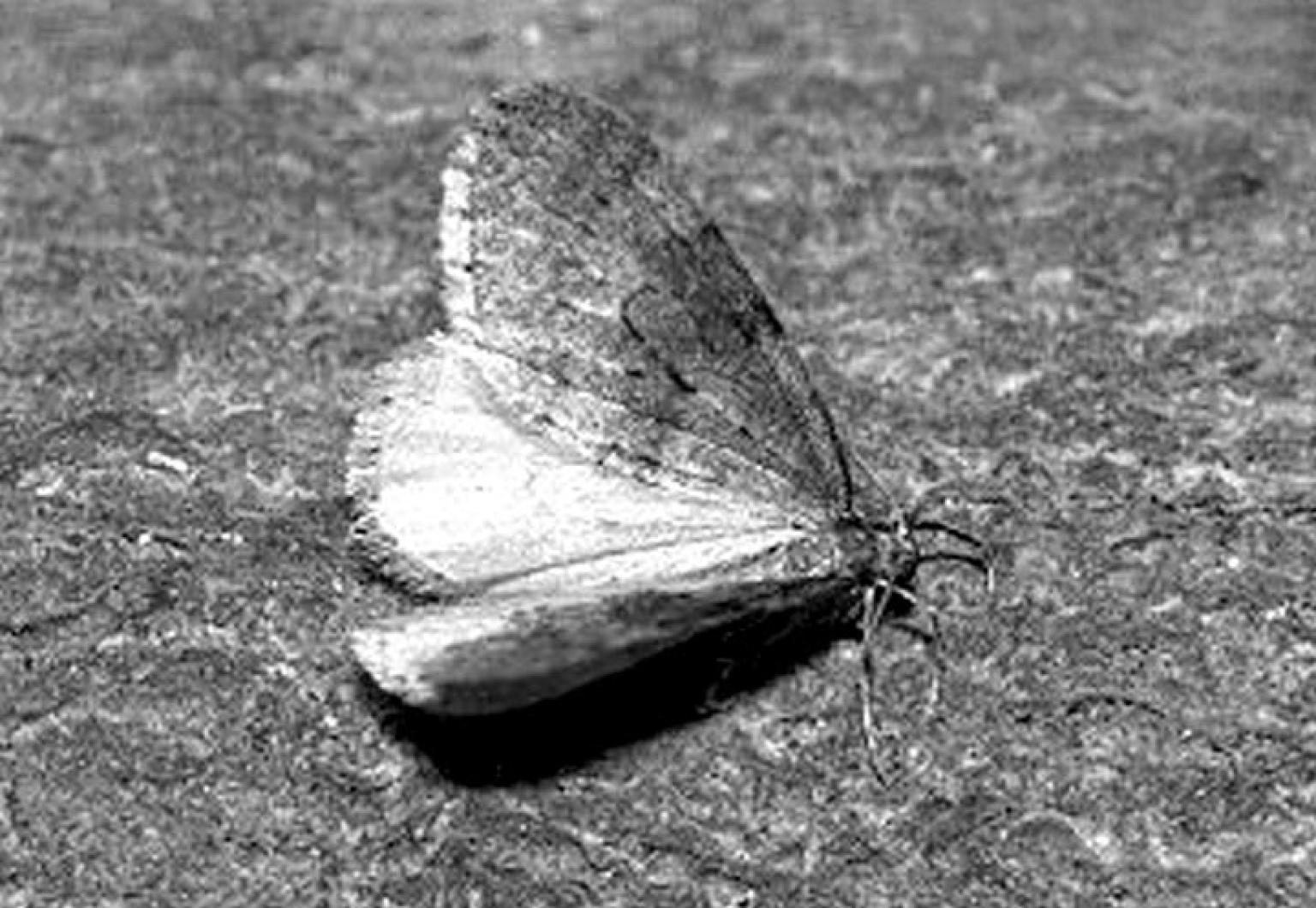Snowflakes have been in short supply on the Vineyard this winter, but in their place has been a blizzard of another sort: winter moths.
Concerned down-Island homeowners and some experts are reporting an unusual and troubling abundance of the ravenous creatures. If confirmed the Island’s trees face a cruel spring, but it appears that the damage, though severe, may be localized.
Though the Vineyard is famous for its unusual variety of rare and native moths, the winter moth is not among them. Native to Europe, it defoliated approximately 75,000 acres of trees in Massachusetts in 2010 alone. It has even spurred a joint program between the University of Massachusetts and the Massachusetts Department of Conservation and Recreation to release hundreds of parasitic flies (Cyzenis albicans) at sites around Massachusetts.
Late last month Bartlett Tree Experts e-mailed an alert about winter moths to its clients claiming an “explosion” of the pests on-Island and warning of the “devastating” springtime ramifications for Island trees. The advisory blamed unseasonably warm weather for the moths’ proliferation.
On Wednesday Bartlett’s representative Mark DiBiase said that his company had seen a concentration of the moths in Edgartown, Oak Bluffs, Vineyard Haven and some parts of West Tisbury. At least down-Island, he said, the animal appears to be much more prevalent than in years past.
“Starting about a month ago in the evenings they have been all around the neighborhoods collecting near lights,” he said.
At Felix Neck Wildlife Sanctuary the moths have been an inconsistent presence, some days appearing in startling numbers and on others not at all.
“I’ve seen some winter moths on the property but I have noticed an absurd amount around Oak Bluffs,” said Felix Neck Wildlife Sanctuary property steward Philip Hunsaker. “We’ve got numbers this year.”
Polly Hill Arboretum executive director Tim Boland is wary of talk about an invasion, though he doesn’t discount the possibility of pockets down-Island.
Chastened by a historic die-off of oaks at the arboretum beginning in 2005, at the end of each year Mr. Boland monitors moths near his house at the edge of the state forest, identifying the creatures under the microscope. Curiously, he hasn’t seen a single winter moth this winter.
“Our view from West Tisbury is that we’re cautiously optimistic,” he said. “The density is really low. We haven’t had a lot of moths nor have we had their eggs around . . . in any great quantity.”
In the moth stage, the animals are not harmful to trees. But mating in the winter, their eggs, visible as honeycomb-like cylinders on tree bark and the occasional windowpane, give rise to caterpillars in late May and early June. The caterpillars then feed on budding leaves, hindering a tree’s ability to photosynthesize. And unlike some other caterpillars the winter moth does not discriminate. Its diverse palate includes a taste for oak, maple, ash, apple and crabapple trees.
The few moths Mr. Boland has captured have all been of the fall cankerworm variety, a lepidopteran almost indistinguishable from the winter moth and also the culprit in the massive swath of decaying oaks still barely standing in West Tisbury. The arboretum worked with Bartlett’s to trace the mid-2000s outbreak to a small pocket of infected trees in Chilmark. But Mr. Boland says that this season the cankerworm’s numbers are not cause for concern.
“What we do need and what’s really great is really cold weather like this,” he said on Wednesday. The recent warm temperatures are “one thing that is worrisome. We should expect some bugs to be trouble this spring because we’ve had such a long period of moderate temperatures. Up until this morning we’ve had pretty wimpy weather.”
Polly Hill grounds manager Tom Clark says that the arboretum had received calls from concerned homeowners and gardeners about the unwelcome presence of the moths, but that he had seen nothing to warrant alarm on a par with last decade’s die-off.
“My response has been that there will likely be ‘hotspots’ of fairly dense populations that may result in significant, but localized, damage,” he said.
But Mr. Clark echoed Mr. Boland’s cautious optimism.
“I don’t think we’ll see the caterpillars in biblical proportions like we did four or five years ago,” he said. “Or at least I hope that’s the case.”







Comments (2)
Comments
Comment policy »